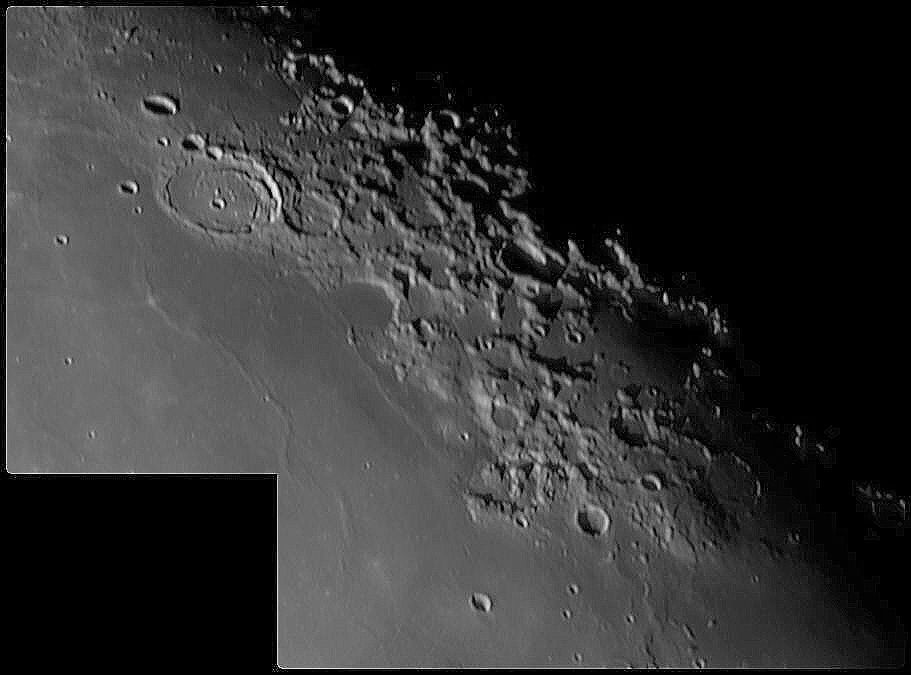To the South of Posidonius 
Move your mouse over the picture to see the names of the various craters.

|
This is the area to the east of Mare Serenitatis. The northen-most crater in the picture is Daniell, an eliptical crater, 31 by 24 Km across and over 2000 metres deep. The large crater south of this is Posidonius (95 Km in diameter); it is often referred to as a 'walled plain' and it certainly looks like a crater
that has been filled with lava from Mare Serentitatis. However it is believed to be somewhat younger than Mare at about 3,500 million years. It is an interesting formation with its double wall to the east, and craterlets and a rima in the floor It makes a nice pair with the much older Chacornac which is 53 Km in diameter, 1500 metres deep and about 4,000 million years old. Just to the south is Le Monnier which is about 3,800 million years old and has evidently been flooded by lava. A little further south is Littrow, 32 Km in diameter and 1200 metres deep. 30 Km further south is the landing site of Apollo 17, the last manned landing on the Moon. In the east of Mare Serenitatis can be seen the Dorsa Smirnov, formerly known as 'The Serpentine Ridge'—maybe a more esciptive name.
The scale markers are approximately 100 Km north and east.
The picture was taken with a ToUcam attached to my LX2005 on 28th February 2005 at 0150 UT, when the Moon was 18.4 days old. The picture was captured in colour mode which accounts for the slightly green tint to the picture.
|
| Date and Time |
28th February 2005 0150 UT |
Camera |
ToUcam 740K in colour mode |
Telescope |
LX200 at prime focus |
Capture |
K3CCDTools. High gamma, 1/100", 0% gain |
Processing |
Registax. Wavelet 1-2 = 10 |
Home Back to NE Quadrant


